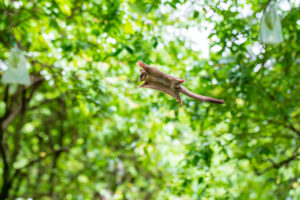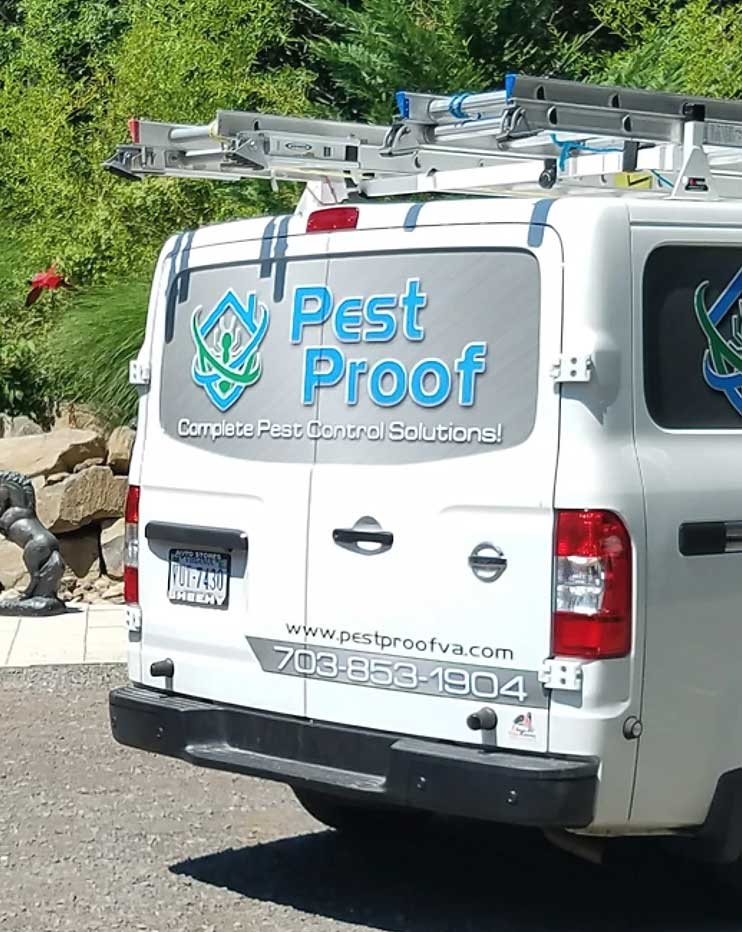Manassas VA Flying Squirrel Control
Flying squirrels like other outdoor rodents may look harmless. They are very unpredictable and have quick, erratic reactions.
What happens if a flying squirrel bites you?
Flying squirrels may look harmless, but they are very unpredictable and have quick, erratic reactions. If they feel threatened, they may bite. Even the domesticated pet flying squirrels will bite if they are not always around humans, handled and hand reared. A wild flying squirrel could carry typhus and in some cases rabies.
If by chance you run into a flying squirrel and are bitten, clean the area thoroughly and carefully with warm water and soap, then seek medical attention as soon as possible. Typhus and rabies can be very dangerous to humans and in some cases fatal. Don’t take the risk, leave flying squirrels alone.
Prevent Flying Squirrels from Invading Your Home
 You may see flying squirrels gliding along the trees in your area. If you do, leave them alone. Flying squirrels are wild animals and are accustomed to living amongst the trees and all of nature.
You may see flying squirrels gliding along the trees in your area. If you do, leave them alone. Flying squirrels are wild animals and are accustomed to living amongst the trees and all of nature.
If you want to avoid being bitten or attacked by a flying squirrel it is best you do not feed, capture, pet or approach a flying squirrel. If you are having a problem with flying squirrels in your area and are concerned for you and your families health and safety, please contact your local wildlife authorities, or you can call upon Pest Proof Pest Management, and we will be more than happy to help you with your unwanted flying squirrel guests.
We use ethical and environmentally conscious methods to remove them safely. Call us at your earliest convenience.
General Information About Flying Squirrels
Flying squirrels are small or medium-sized rodents. Some people even have domesticated them and have kept them as pets. Flying squirrels can glide from tree to tree. They glide but cannot fly like a bird or bat. Flying squirrels have a parachute-like membrane that stretches from wrist to ankle. They can glide up to 300 feet. A flying squirrel can change the speed and direction of its glide mid-air by moving its limbs and their long tail. A flying squirrel is nocturnal and they tend to come out at night because there is less chance of them encountering predators. A flying squirrel’s predators could be feral cats, owls, coyotes, tree snakes and raccoons.
Flying squirrels mate between February and March. When the infants are born, the mother stays with them in maternal nests. When infant flying squirrels are born, they are hairless and helpless. It takes about five weeks for them to develop fully. Mother flying squirrels provide nurture and protect their young. Male flying squirrels take no part in the raising of the young. About three months after fully developing, the young have fully mastered their glide and leap and are ready to go out on their own independently.
Flying squirrels are omnivorous, but prefer to eat fruits, fungi, nuts and birds eggs; they will also eat small bugs as well. A flying squirrel will forage and collect food at night. They easily do this because of their heightened sense of smell and ability to conserve their energy as they glide.
Two types of flying squirrels can live in North America, the North American flying squirrel and the South American flying squirrel. Both types like to nest in dense forests and prefer various kinds of trees. A flying squirrel’s nest location is about 15 feet above the ground. There they can be safe from most ground predators. Flying squirrels may also make a home of abandoned woodpecker cavities in trees – their nests are made of bark, moss, pine needles, feathers and fur. Once a nest becomes dirty and flea-ridden they will abandon the nest and move to a new location. In a few cases flying squirrels have made nests in people’s attics. A flying squirrel only needs a small hole to enter.
How To Identify Flying Squirrels
Flying squirrels are easy to identify. They are small and have big eyes. They have a thin membrane that stretches from its forelimbs to its hind-limbs.
When a flying squirrel extends its front and rear limbs; the thin membrane creates a parachute-like form of transportation. Squirrels don’t fly, but they can glide from tree to tree and do it rather quickly. Their ears and noses are short and pointed. Although the coat color varies on species, the most common flying squirrels in the United States are usually gray and brown with white underparts.
If you are having difficulty identifying this gliding rodent in your area, please feel free to contact experts at Pest Proof Pest Management.
Pest Proof
Management
Pest Control and Wildlife Removal for
Residential & Commercial
in Manassas, VA, Front Royal, VA, and
Fredericksburg, VA





